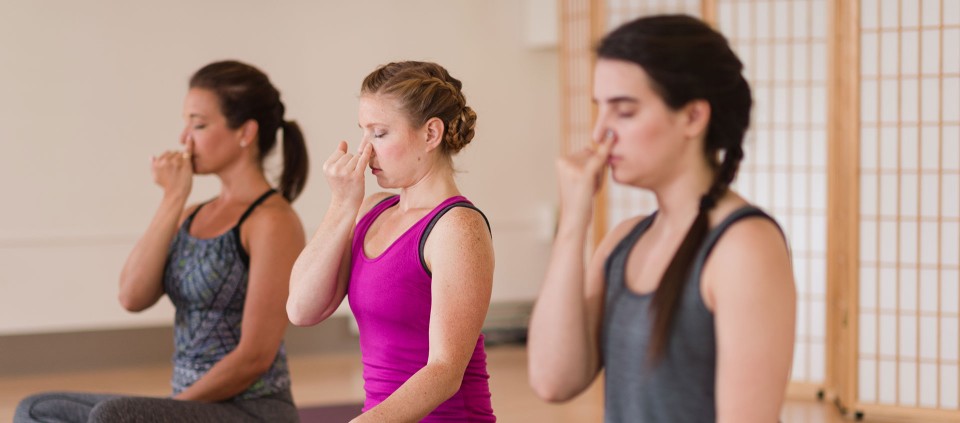Pranayama: A Path to Healing and Freedom

by Allison Gemmel Laframboise and Yoganand Michael Carroll
Pranayama was created to make you more sensitive, so that the disconnects in your life feel more painful. Why would we want to feel more pain? Because we can put up with a dull ache. We will almost always choose a long, drawn-out, dull pain over a quick, sharp one. We feel emotional. We get sad. We feel lonely. If we feel the stinging of that loneliness for 10 or 15 minutes, without resisting it, it evolves into something else and is gone. Guaranteed.
Pranayama is intended to increase sensitivity so we can actually see how much pain we are in. Then we can choose to take responsibility for it and change it. If you’re unhappy in your job, one option is to say, “I hate this job, but I make a lot of trips to the water fountain. I eat a lot of cookies. I play on the internet when no one is looking. I do all these little things that keep me from being aware of how painful it is.” Then, at some point, you begin to feel like someone stole your life. Another option is to say, “You know what? I hate this job. Bye.”
Now, there is nothing wrong with having a job we don’t like or being someplace we don’t want to be if we can accept the situation and give it meaning. “I don’t love this job, but I found a way to view it as serving people and providing me with an opportunity to grow. Plus, I’m saving money to start my own business.” That is very different from “I am trapped” or “I don’t deserve better.” There are a lot of people in very unhappy situations—unhappy relationships, unhappy health situations, unhealthy financial situations—because they don’t believe they deserve better.
Pranayama is not meant to comfort or console. In images of the goddess Kali, who represents prana, she does not hold a warm blanket in her hand. She bears a sword and a severed head. She loves her children so much that she will not let anything hurt them. If you evoke Mother Kali and she awakens, she will look at you and say, “That addiction is draining your life. It’s gone.” “That relationship is not working for you. It’s gone.” You say “No, no, just a minute. I didn’t want that. Why don’t you go away, and I’ll call you again next time?” But Kali does not work that way.
Prana is like Kali. If you do not want to grow, do not try to awaken prana. If you do not want to be fully alive, do not try to awaken prana. If you can develop enough discrimination, however, you can play with prana.
One of the classical books on hatha yoga, the Gherenda Samhita, casts pranayama in the following light: “Now I shall tell thee the rules of pranayama, or regulation of breath. By its practice, a man becomes like a god.” The term “god” here refers to an angelic being or a being of light. In other words, the yogi becomes a radiant being, living in a larger sphere with the ability to go places that ordinary people do not go, experiencing utter bliss and communion beyond that which ordinary people encounter.
This is all available to you. The bottom line is to be safe and to be true to yourself.
Find out about upcoming programs with Allison Gemmel Laframboise and Yoganand Michael Carroll at Kripalu.
Excerpted with permission from Pranayama: A Path to Freedom and Healing, © 2015, by Allison Gemmel Laframboise and Yoganand Michael Carroll.